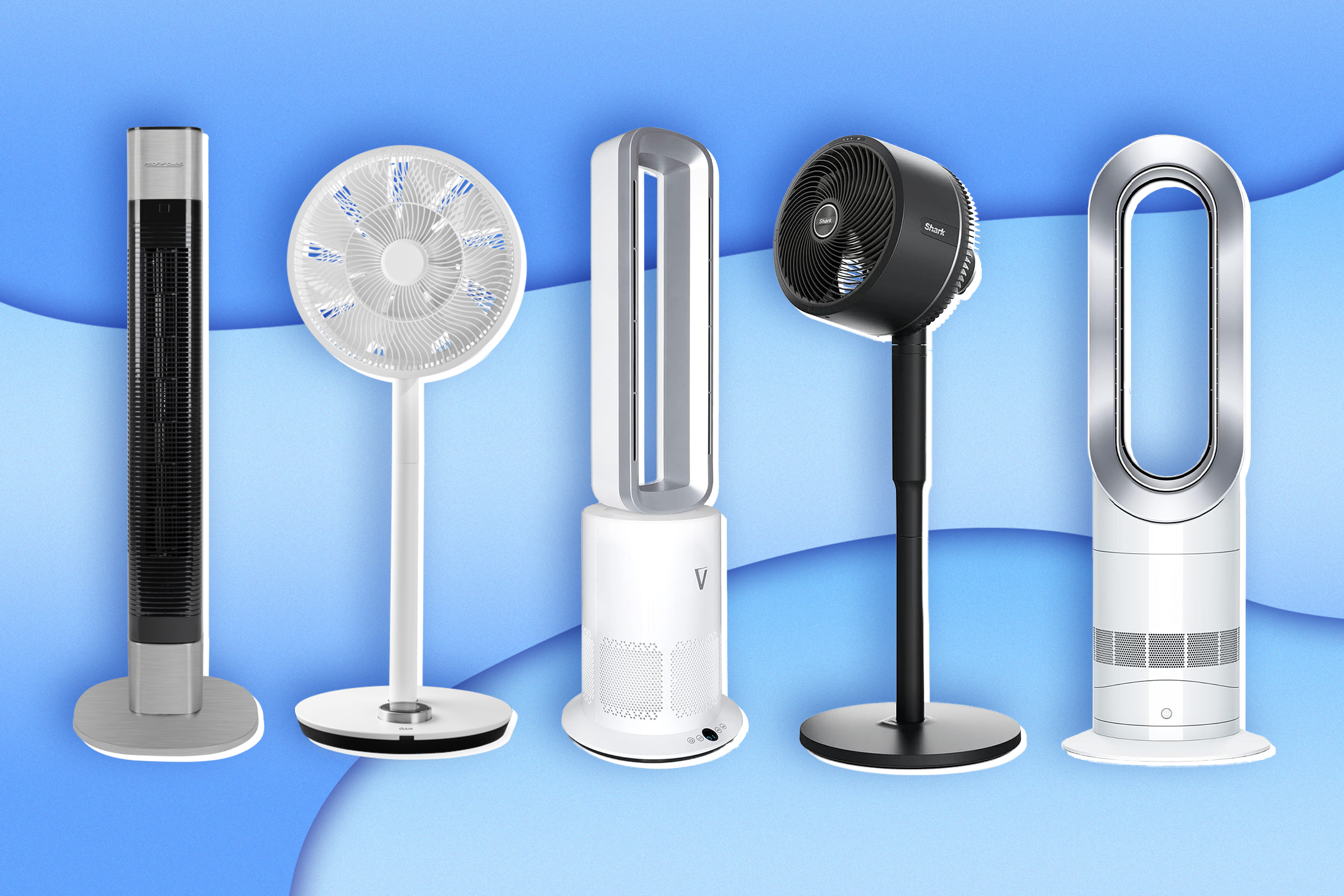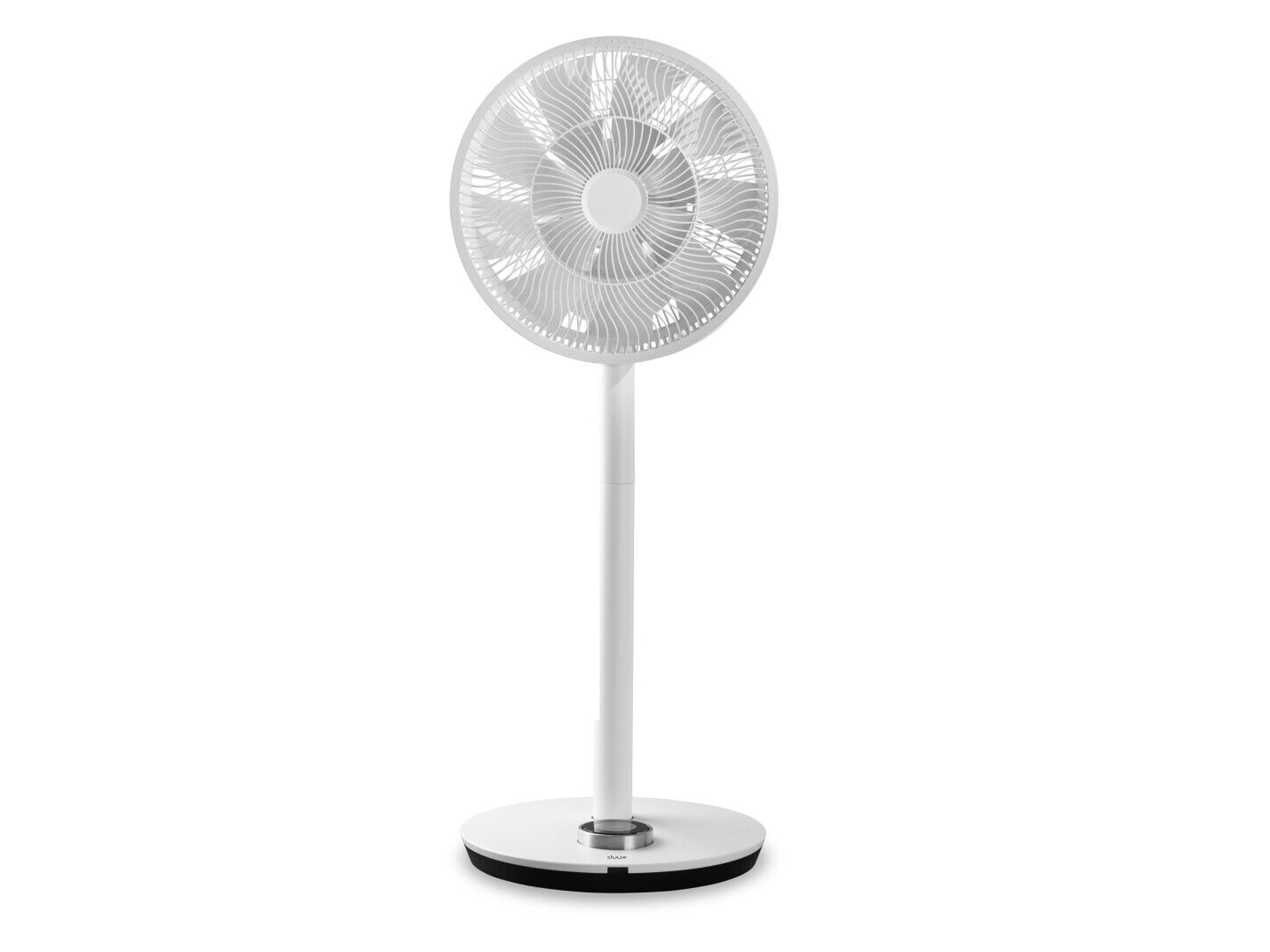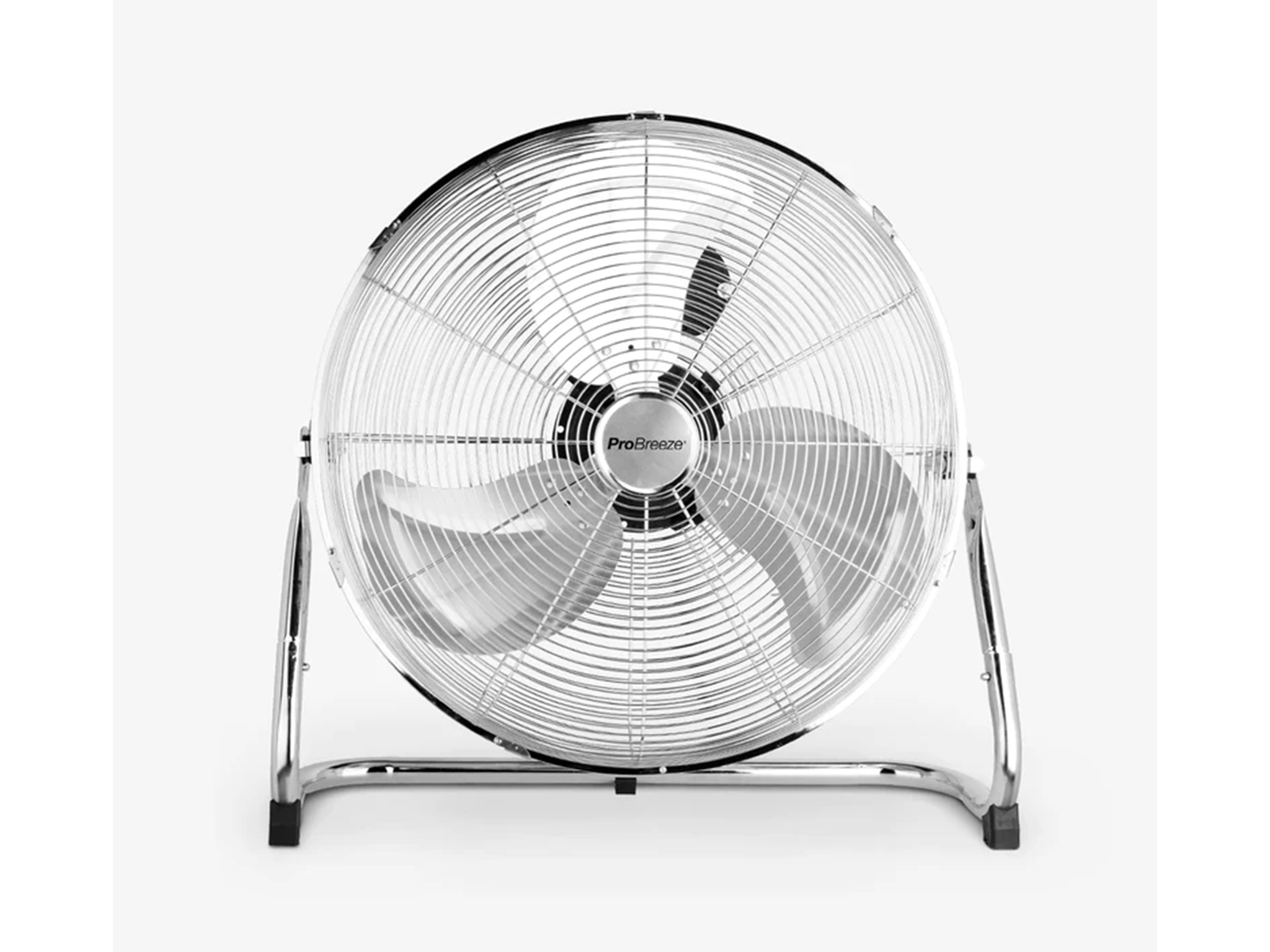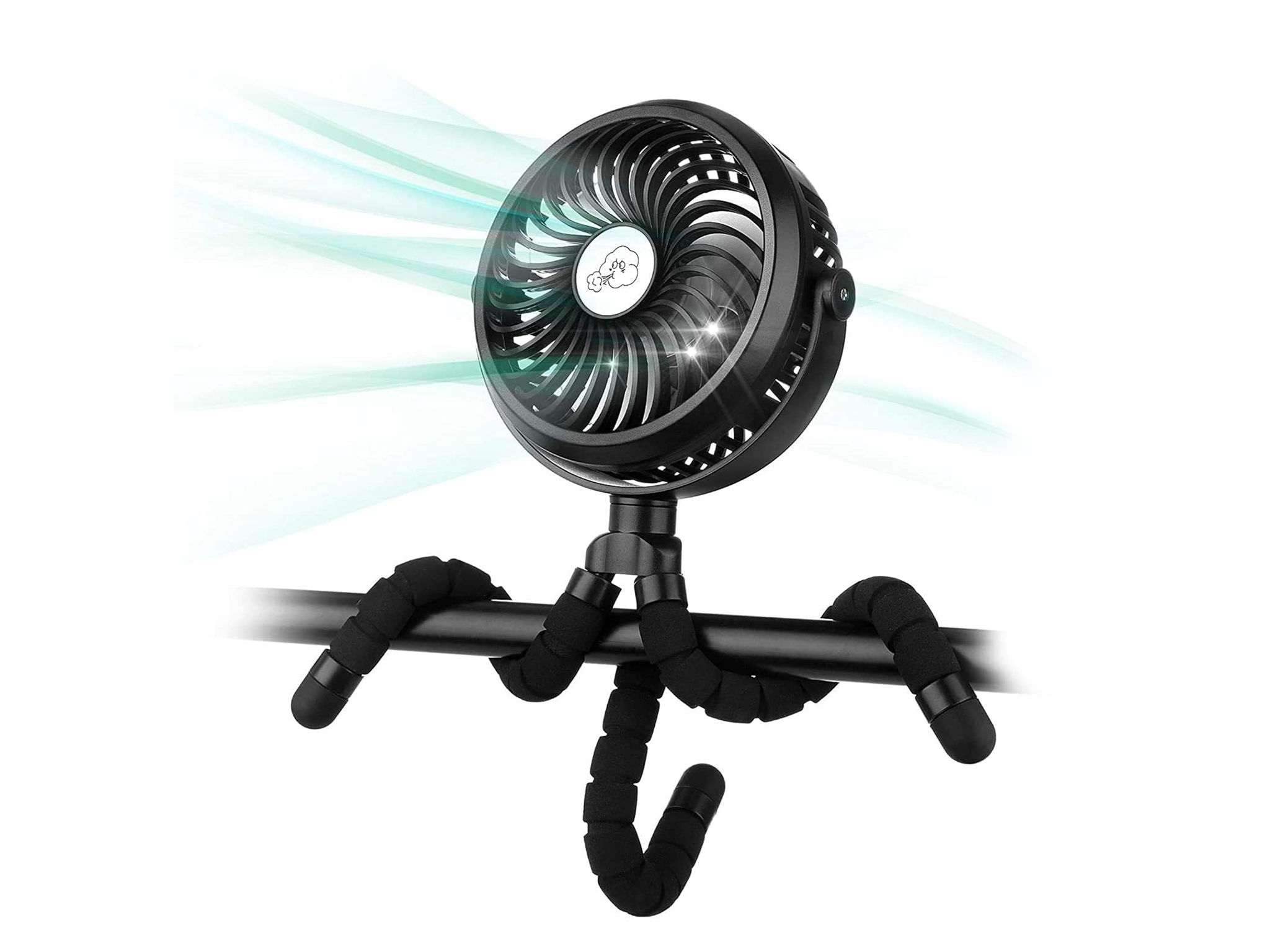
The Independent's journalism is supported by our readers. When you purchase through links on our site, we may earn commission. Why trust us?
Best fans for 2024: Tried and tested models to help you stay cool
Be prepared for when temperatures rise, with these home heroes

The ideal time to buy a fan is before you need one. Summers are getting warmer and wetter, with recent heatwaves resulting in record-breaking temperatures across the UK. If you leave it too late to buy one of the best fans in our list, you’re in for a few sticky days and nights while you wait for it to arrive. It’s also not uncommon for some models to sell out completely, leaving you with fewer options in terms of price, intensity and portability.
Fans are, on the whole, a lot cheaper to buy and operate than air conditioners, with basic fan models starting at £20. However, the lower-priced options are often noisy and have limited functionality, so, you might need to spend a little more to find a quieter fan with a remote control, timer and perhaps even smart home functionality and voice-operated controls.
If you don’t think you can justify buying a fan you’ll only use for a few days every year, there are fans that can also operate as heaters, offering year-round usability.
From small desktop and wearable neck fans to larger tower fans and fan/heater hybrids, we put a variety through their paces, to find out which offered the most relief from high temperatures.
How we tested the best fans

We tested each fan at home, in rooms of different sizes, to assess the cooling capabilities of each device. From a small home office to a large open-plan living space, we placed the fan in the centre of the room and judged whether or not we could feel its effects at the side of the room. For the smaller portable fans, we measured performance by working out how close we had to be to the unit to feel the benefits. We pushed all the buttons, playing with timers, remote controls and noise levels, to thoroughly understand what would be the most useful when the warmer weather arrives.
The best fans for 2024 are:
- Best fan overall – Vortex Air cleanse heater, cooler and purifier: £179.99, Amazon.co.uk
- Best budget fan – Draper 08710 clip-on desk fan: £11.95, Amazon.co.uk
- Best cordless fan – Shark FlexBreeze portable fan: £169.99, Johnlewis.com
- Best neck fan – Auokai portable neck fan: £10.26, Amazon.co.uk
Vortex Air cleanse heater, cooler and purifier

- Best: Fan overall
- Type: Bladeless fan
- Noise: 35-51dB
- Speed settings: 10
- Oscillation: 120 degrees
- Size: 94cm x 34cm x 34cm
- Weight: 5.67kg
- Timer: Yes
- Why we love it
- Versatile
- Remote control operated
- Useful thermostat
- Take note
- Quite heavy
Draper 08710 clip-on desk fan

- Best: Budget fan
- Type: Desk fan
- Noise: Unspecified
- Speedy settings: Two
- Oscillation: N/A
- Size: 198mm x 170mm x 216mm
- Weight: 750g
- Timer: No
- Why we love it
- Affordable
- Compact size
- Take note
- Not hugely powerful
Shark FlexBreeze portable fan

- Best: Cordless fan
- Type: Pedestal fan
- Noise: 62dB
- Speed settings: Eight
- Oscillation: Up to 180 degrees
- Size: 34cm x 34cm x 94cm
- Weight: 5.6kg
- Timer: No
- Why we love it
- Very quiet
- Can be used outside
- Take note
- Heavy
Auokai portable neck fan

- Best: Neck fan
- Type: Personal fan
- Noise: 40db
- Speed settings: Three
- Oscillation: No
- Size: 22.2cm x 2cm x 5.8cm
- Weight: 260g
- Timer: No
- Why we love it
- Lightweight
- Quiet
- Take note
- Attention-grabbing
- Takes a long time to charge
Dyson AM09 hot + cool fan heater

- Best: Year-round fan
- Type: Bladeless fan
- Noise: Unspecified
- Speed settings: 10
- Oscillation: 350 degrees
- Size: 20.4cm x 15.29cm x 59.44cm
- Weight: 2.68kg
- Timer: Yes
- Why we love it
- Remote control
- Attractive
- Wide oscillation range
- Take note
- Expensive
Duux whisper flex smart fan

- Best: Smart fan
- Type: Pedestal fan
- Noise: 13dB – 55dB
- Speed settings: 26
- Oscillation: 90 degrees horizontal, 100 degrees vertical
- Size: 34cm x 34cm x 95cm
- Weight: 4.5kg
- Timer: Yes
- Why we love it
- Easy-to-use app
- 26 speed settings
- Quiet
- Take note
- Not that attractive
- Bulky
EasyAcc pedestal fan

- Best: For taking camping
- Type: Bladed fan
- Noise: Unspecified
- Speed settings: Four
- Oscillation: 120 degrees
- Size: 8.1cm x 18.5cm x 20.8cm
- Weight: 650g
- Timer: No
- Why we love it
- Built-in lamp
- Cordless
- Adjustable height
- Take note
- Not hugely powerful
Duronic pedestal fan

- Best: Pedestal fan
- Type: Pedestal fan
- Noise: Unspecified
- Oscillation: 90 degrees
- Speed settings: Three
- Size: 120cm x 120cm x 45cm
- Weight: 6.14kg
- Timer: Yes
- Why we love it
- Five-blade design
- Good value for money
- Take note
- Only available in black
Beurer LV50 fresh breeze personal air fan and cooler

- Best: Air cooler
- Type: Personal fan
- Noise: Unspecified
- Speed settings: Three
- Oscillation: No
- Size: 14cm x 14cm x 12cm
- Weight: 498g
- Timer: No
- Why we love it
- Fast to charge
- Refreshing humidifier function
- Take note
- Very compact
ProBreeze 20in floor fan

- Best: Floor fan
- Type: Floor fan
- Noise: 62-67dBA
- Speed settings: Three
- Oscillation: No
- Size: 59cm x 19.7cm x 57cm
- Weight: 5kg
- Timer: No
- Why we love it
- Super strong
- Sturdy
- Take note
- No oscillation
Vonhaus portable 31in tower fan

- Best: Miniature tower fan
- Type: Tower fan
- Noise: Unspecified
- Speed settings: Three
- Oscillation: 70 degrees
- Size: 80cm x 28cm x 28cm
- Weight: 3kg
- Timer: Yes
- Why we love it
- Powerful
- Can add a scent for a fragrant breeze
- Take note
- No app connectivity
MeacoFan 1056 air circulator
.png)
- Best: Desk fan
- Type: Desk fan
- Noise: 20dB – 60dB
- Speed settings: 12
- Oscillation: 60 degrees up, 80 degrees left
- Size: 34cm x 35cm x 46.5cm
- Weight: 3.2kg
- Timer: Yes
- Why we love it
- Very effective
- Quiet
- Take note
- Slightly chunky shape
Levoit tower fan
.png)
- Best: For speedy cooling
- Type: Tower fan
- Noise: 28dB
- Speed settings: Five
- Oscillation: 90 degrees
- Size: 16.5cm x 16.5cm x 92cm
- Weight: 3.6kg
- Timer: Yes
- Why we love it
- Extremely quiet
- Senses the temperature in a room
- Take note
- Can be tricky to adjust from manual to auto mode
Dyson purifier hot+cool formaldehyde

- Best: Do-everything model
- Type: Tower fan
- Noise: 62dB
- Speed settings: 10
- Oscillation: 350 degrees
- Size: 76.4cm x 20.cm x 24.8cm
- Weight: 5.5kg
- Timer: No
- Why we love it
- Works as a heater and air purifier too
- Fan oscillates 350 degrees
- Connects to easy-to-use app
- Take note
- Pricey
Beldray handheld mini portable fan

- Best: Handheld fan
- Type: Handheld fan
- Noise: Unspecified
- Speed settings: One
- Oscillation: No
- Size: 7cm x 6cm x 10cm
- Weight: Unspecified
- Timer: No
- Why we love it
- Keeping you cool on the move
- Affordable
Tower cavaletto 12in metal desk fan

- Best: Stylish fan
- Type: Desk fan
- Noise: Unspecified
- Speed settings: Three
- Oscillation: 80 degrees
- Size: 25cm x 34cm x 42cm
- Weight: 2.85kg
- Timer: No
- Why we love it
- Nice design
- Decent cooling abilities
- Take note
- No remote control
- Need to sit close to it to reap benefits
Princess smart wifi-connected tower fan

- Best: Tower fan
- Type: Tower fan
- Noise: 55dB
- Speed settings: Three
- Oscillation: 80 degrees
- Size: 105cm x 33.5cm x 33.5cm
- Weight: 5.86kg
- Timer: Yes
- Why we love it
- Range of handy features
- Stylish design
- Take note
- Fairly noisy when on highest setting
Black + Decker digital tower fan
.png)
- Best: Remote control fan
- Type: Tower fan
- Noise: Unspecified
- Speed settings: Three
- Oscillation: 90 degrees
- Size: 81cm x 31cm
- Weight: 4kg
- Timer: Yes
- Why we love it
- Eight-hour timer option
- Oscillates 90 degrees
- Magnetic remote control for safe storage
- Take note
- Black design would stand out in light coloured room
JML my foldaway fan
.png)
- Best: Fan for small spaces
- Type: Pedestal and desk fan
- Noise: Unspecified
- Speed settings: Three
- Oscillation: No
- Size: 197cm x 197cm x 102cm
- Weight: 1kg
- Timer: No
- Why we love it
- Quiet
- Collapsible for use when travelling
- Take note
- Slightly flimsy base
Honeywell HYF290E quiet tower fan

- Best: Fan for ease of use
- Type: Tower fan
- Noise: 48dB
- Speed setting: Eight
- Oscillation: 80 degrees
- Size: 27.3cm x 20.9cm x 83.4cm
- Weight: 4kg
- Timer: Yes
- Why we love it
- Eight speed settings
- Sturdy base
Winique clip-on stroller fan

- Best: Fan for children
- Type: Clip-on fan
- Noise: 57dB
- Speed settings: Three
- Oscillation: 360 degrees
- Size: 6.6cm x 13.7cm x 27.9cm
- Weight: 330g
- Timer: No
- Why we love it
- Easy to attach to a stroller or car seat
- Sturdy
- Take note
- Not very eco-friendly
Fan FAQs
Do I need a desk fan or tower fan?
Before buying your fan, we’d recommend thinking about where you’d like it to go and its purpose in your home. Desk fans are much more compact than tower fans and are designed to sit on your work table. This also means they tend to blow air only in a small space, which can be perfect for cooling you down while you work.
Meanwhile, tower fans are better equipped to cool down a whole room, but they take up more space and need to be kept on the floor.
Electric fans vs air conditioners
Put simply, both will keep you cool, but they work quite differently. While electric fans tend to be much more budget-friendly than air conditioners, they aren’t always as powerful.
Electric fans work by moving air around the room, making you feel cooler. Air conditioners, on the other hand, actually cool the temperature of the room, making them a more powerful alternative to the humble electric fan.
Of course, that means the price of an air conditioner will likely be higher than that of a fan. On average, you can expect to pay between £250 and £500 for a portable air conditioner, while a fan could set you back much less – often around £100. You’ll also need to regularly clean dust filters if you opt for aircon.
There is the environmental aspect to consider, too. Air conditioners can be hefty machines that often take up more space and energy in your home. With energy consumption contributing towards climate change, it can be viewed as counterproductive to use more energy to try and keep us cooler.
Is there a fan that blows cold air?
Most fans don’t blow cold air. They simply move air particles around your room faster, making you feel cooler without actually pumping out a cool breeze. If cooler air is what you’re after, a portable air conditioner may be your best option.
Where’s the best place to position a fan in a room?
The million-dollar question. Finding the perfect position for your fan should make at least some difference. We put the question to Duux’s brand manager, Chloe King. She recommends: “When the outside temperature is cooler than the inside temperature, try putting the fan in front of an open window, to blow cool air from outside into the room.”
Similarly, when choosing a particular model, King noted: “Air circulation is key, so, consider a fan that oscillates both horizontally and vertically.” Finally, she recommends opting for a fan that is adaptable and portable, so it “can be effortlessly changed from full to table height, allowing for greater flexibility between rooms and positions”.
Does putting ice in front of a fan work?
It may not do the job as well as an air conditioner, but putting ice in front of a fan can really blow cooler air around your room. It works by chilling the air that your fan blows out, which will circulate a cooler breeze.
What are the most common types of fan?
- Tower fans: These tall, thin fans have an oscillating cooling device stretching vertically. They are good for cooling down a whole room while taking up very little floor space.
- Stand or pedestal fan: These floor fans feature a traditional cooling unit that sits on an adjustable stand. Many allow you to direct the airflow to where it’s needed.
- Desk fan: These compact styles are designed to sit straight on your tabletop and offer short-range, directional airflow for personal cooling. They are both space and cost-efficient.
- Handheld fan: Great for travelling, you can slip these battery-operated fans into your pocket or handbag and bring them out as required.
- Ceiling fan: These fans, consisting of a rotating blade that hangs from the ceiling, circulate air at different speeds whenever required. Great for those who want a more permanent option.
- Bladeless fan: Available as freestanding or desk varieties, these new-age fans work with an electric motor that pulls in air through small vents in the base, then forces it upwards and out at high speeds through the circular ring above. Good for efficiency, modern looks and safety.
What features should I look out for?
- Oscillating: Instead of focusing the air in a single direction, oscillating fans sweep the airflow across the room. Some fans give you the option of different oscillation patterns and speeds.
- Speed settings: Most fans have at least three settings, so you can adjust the amount of cool air you get, with some offering significantly more.
- Adjustable height and angle: This is particularly useful if the fan doesn’t have oscillating capabilities.
- Timer: A programmable timer enables you to set your fan to start and stop running at certain times – great if you want to come back to a cool house after work.
- Auto shut-off: A useful safety feature, particularly if you’re likely to fall asleep with the fan running.
- Remote control: A great solution if you don’t want to get up to change the speed or set the timer.
- Noise output: While some people can easily ignore the white noise of a fan, others find it highly irritating, especially in bedrooms, so you might want to look for a model designed to be quiet.
- Size and weight: This is important to consider if you want a fan that is easily transportable and can be stored away in the winter months.
- Built-in heater: Some fans combine heating and cooling capabilities in a single model. You’ll pay more for it, but it will save you the trouble of buying a separate heater in wintertime.
- Built-in air purifier: This can be a saviour for people with pollen or dust allergies – but it will increase the price tag.
- Safety: If you have young children or pets, it’s worth bearing in mind the hazards of getting fingers or paws caught in the blades of a full-speed traditional-style fan.
How much does it cost to run a fan?
According to research by the price comparison website Uswitch, “a 120W electric fan costs approximately 2p an hour to run”, so keeping it on for 12 hours a day will cost you 24p, which works out at £1.68 per week.
At 44p per hour, portable air conditioning units are more expensive. Uswitch found that, on average, people have their units on for four hours 18 minutes during the day, and four hours 48 minutes at night. This means it could “drive up electricity bills by £28 per week” during the warmer months. As such, a fan is a far cheaper option.
How much electricity does a fan use?
Finding out how much electricity a fan uses depends on the model you have, but you can actually calculate it by dividing the wattage by 1,000 to give the amount of energy it uses per hour. For a 120W fan, for example, divide by 1,000 and you’ll get 0.129. If you’ll be using it for 12 hours a day, multiply 0.129 by 12 and you’ll get 1.548kW, which is how much electricity the fan uses.
The verdict: Fans
For a fan that can do it all, you can’t go wrong with the Vortex Air cleanse. As it’s an air purifier, heater and fan in one, it’s excellent value for money. The Duux whisper smart fan was also able to cool a room quickly for a similar price and we were impressed by how quiet it was. If you don’t want to spend that much money on a fan, the Beurer personal air cooler will keep you comfortable while working from home in a heatwave.
Keep extra cool this summer, with our guide to the best portable air conditioners for your home
Voucher Codes










